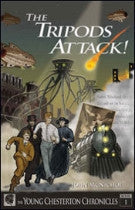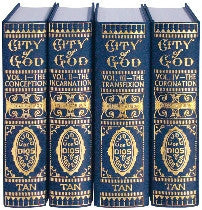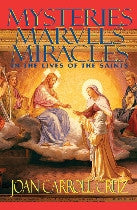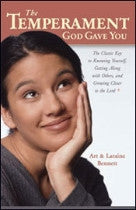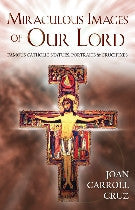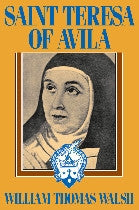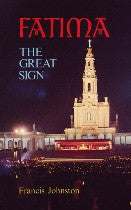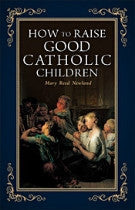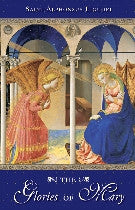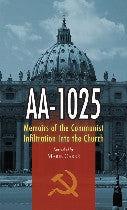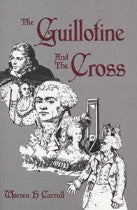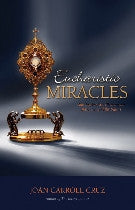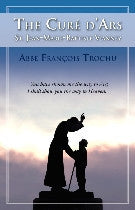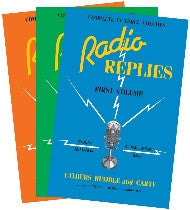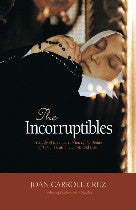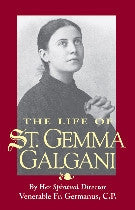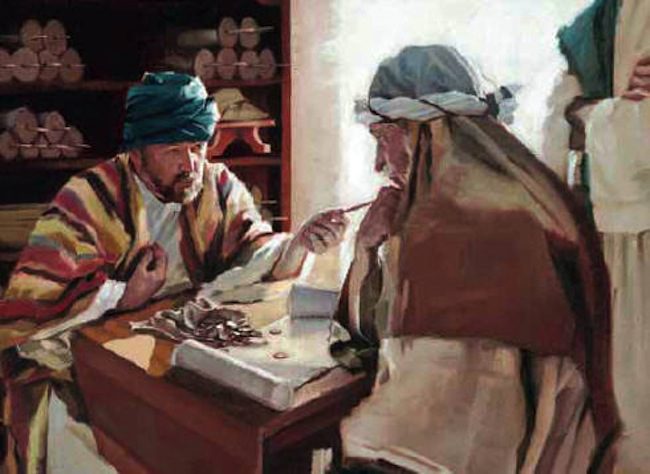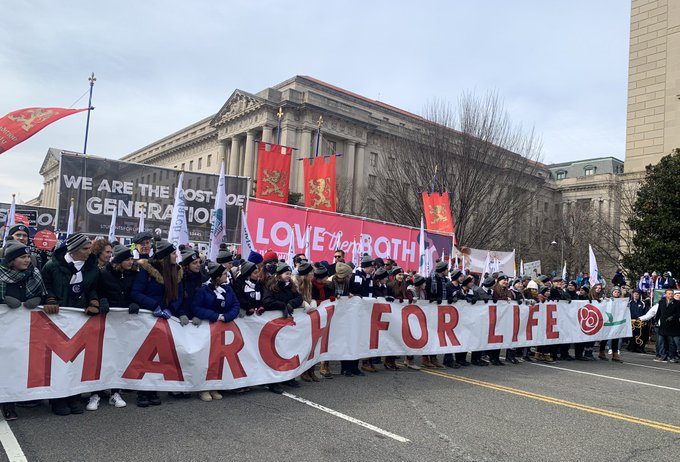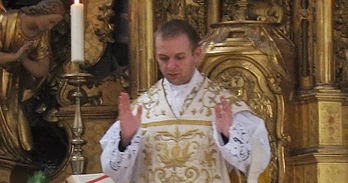Choir rubrics for the ceremonies of the roman breviary
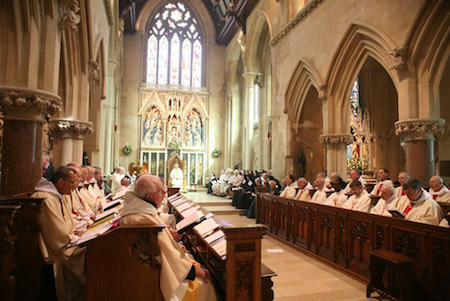
“Let all things be done decently and in order,” says St. Paul (I Cor. 14 : 40). The use of ceremonial is toward this end, and is inspired by the spirit of reverence.
Our online Breviary is published for the benefit of clergy and laity who wish to pray the Divine Office individually and in private. By its very nature of being online, it is unsuitable for use in church services, or in quires and places where they sing the Office.
Nevertheless, there are many advantages of knowing the correct choir rubrics. The physical movements and positions of the body reflect the nature of the prayers we read, and it may even be helpful occasionally to emulate these ceremonial movements even in private recitation.
As soul and body are connected, it is natural that we will find our souls uplifted by following some of the rubrics on a regular or at least occasional basis. We should always strive, for example, to bow our heads for the Gloria Patri and at other places indicated; we should make the sign of the cross at the appropriate times, and make a distinction in our voices between the silent prayers and those that are said aloud. By observing these simple rubrics, we enter more closely into the spirit of the liturgy and are more likely to derive the benefits that come from involving our bodies in the work of our souls.
Merely by being aware of when we should be standing, sitting or kneeling in choir can be helpful in this regard, and prevent our reading of the liturgical services from being unduly informal. This simple knowledge can transform our mundane lip-service to a more meaningful and solemn attendance to our prayer, even transporting us in spirit to the great gothic quires of our ancient abbeys and cathedrals.
While the choir rubrics provided here are not meant to be authoritative or definitive in nature, they will at least give the reader the occasion to absorb some of the spirit of the liturgy that words alone cannot convey.
- At the sound of the bell, the Community meet at some place outside the chapel, and form into two ranks, the youngest nearest the entrance and the Superior last. At the given signal they enter the Quire, two and two, and, after genuflecting, proceed to their respective stalls.
- Kneeling, they say silently the Prayer Before the Office.
- When the Superior gives the signal (by a tap on his desk) they rise, and bowing profoundly (so that the tips of their fingers may touch the knees), say in silence the Triple Prayer.
- At the signal, all turning eastward (that is, towards the altar), the Superior, or the Hebdomadary, that is, the one who for the week conducts the service, begins Domine labia mea aperies, making a sign of the cross upon the lips; then Deus in adjutorium meum intende, making the large sign of the cross.
- At the Gloria Patri all turn toward the altar, bowing profoundly. At the Sicut erat, all turn, facing each other across the Quire.
- The first Cantor goes into the middle to the Lectern and commences the Invitatory, to which both sides of the choir respond. The Psalm is said by the Cantor. On greater festivals two Cantors should be used.
- In the third verse of the Invitatory, at the words Venite adoremus, all kneel till the words Nos autem, when they rise for the repetition of the Invitatory.
- The first line of the Hymn is given out by the first Cantor and the rest of the verse is taken up by his side of the choir; then the second choir takes up the second verse, and so on, both choirs joining in and bowing profoundly for the last verse.
- The Antiphon is given out by the first Cantor, and also the Psalm up to the asterisk, then all his side of the choir take it up. At the end the Cantor repeats the Antiphon, and the second Cantor from the other side begins the second Antiphon and Psalm.
- While the Psalms are being said the choir can recline in their stalls or sit down with their birettas on.
- A short pause ought to be made just after the last verse, and all raise their birettas and bow as they say the Gloria Patri. In monastic choirs, all rise and bow to the altar for the Gloria Patri.
- At the end of the third Psalm (or on days when only one Nocturn is said, at the end of the ninth Psalm), all rise, and the first Cantor says the Versicle to which all respond.
- The Officiant says Pater Noster aloud; then all, bowing, continue it in secret till Et ne nos which is said by the Officiant aloud, and all make the answer.
- The Officiant then gives the Absolution.
- The Lector goes to the Lectern and after genuflecting turns. bowing toward the Officiant, and says Jube domne. After the blessing, given by the Officiant, to which all reply Amen, the choir sits while the Lector reads the Lesson.
- At the end of the Lesson the choir, started by the Cantor, say the Responsory; but the Versicle is said by the Lector, who having said it retires to his place, while the next one in order comes out to read the second Lesson.
- The same rubrics are followed for the second Lesson and Responsory. The third Lesson (or ninth if three Nocturns are said) is said by the Superior or Hebdomadary in his place. All stand during the reading of the Gospel verse, and sit for the rest of the lesson. However, if it be the Superior who reads the Lesson, all remain stand for the entire Lesson out of respect.
- The Lessons over, the Te Deum is started by the Cantor, all rising and facing eastward.
- At the Te ergo all kneel facing one another, rising at the next verse.
- If Matins is not followed at once by Lauds after the Te Deum the Versicle Dominus vobiscum, with the Prayer from Lauds and the concluding Versicles, are said. Otherwise, Lauds begins immediately with the Versicle Deus in adjutorium.
- If Lauds does not follow immediately from Matins, the Superior gives the signal (by a tap on his desk), all rise, and bowing profoundly (so that the tips of their fingers may touch the knees), say in silence the Dual Prayer. Otherwise Lauds begins immediately after the Te Deum. All turning eastward (that is, towards the altar), the Officiant begins Deus in adjutorium meum intende, making the sign of the Cross. At the Gloria Patri all turn toward the altar, bowing profoundly. At the Sicut erat, all turn, facing each other across the Quire.
- The first Cantor goes into the middle to the Lectern and commences the first Antiphon and Psalm and repeats the former at the end, and so with the third and fifth.
- The second Antiphon and Psalm are started by the second Cantor, and so with the fourth.
- During the Psalms in this and all other hours the choir recline in their stalls or sit, as the custom may by. The former for preference.
- If it is found that the reciting note is lowered after several Psalms, at the fifth Psalm it will be well for the first Cantor to raise the pitch when giving out the Antiphon.
- The Psalmody over, all rise and face eastward while the Officiant says the Little Chapter, to which all answer Deo Gratias. Then, all turning faceways, the first Cantor gives out the first line of the Hymn and all his side continue it. The second verse is said by the opposite choir, and all bow during the last verse which is sung by both sides of the choir.
- The Versicle is said by the Cantor, and all make the Response.
- Then he starts the Antiphon and the Benedictus.
- At the Canticle, which is to be said more solemnly than the rest of the Office, all turn eastwards and make the sign of the Cross. NB. This is done at the three Canticles, Benedictus, Magnificat and Nunc Dimittis. The Gloria Patri is said as usual, with the choir sitting for the Sicut erat and Antiphon.
- If the Preces are to be said, all kneel, and the Cantor’s side start Kyrie eleison, to which the second Cantor’s side respond Christe eleison, both sides joining in the last invocation. Then the Officiant says the Versicles, to which all respond. All remain kneeling for the Dominus vobiscum and the Prayer.
- If the Preces are not said, after the repetition by the Cantor of the Benedictus Antiphon, all rise and the Officiant says the Dominus vobiscum and the Prayer. If there are any Commemorations they are said now, all saying the Antiphon, the Cantor following with the Versicle, to which all respond. The Officiant recites the Prayer. During the concluding Versicles the Officiant says the Dominus vobiscum, while the Cantor sings the Benedicamus Domino. During the Fidelium, said by the Officiant, all make the sign of the Cross.
- After the Fidelium, all bow while saying together in secret the Pater noster, rising for the Dominus det nobis.
- All then kneel, except on Sundays and during Eastertide, when all remain standing, but facing eastwards) for the Antiphon of Our Lady, which being over, after a few moments of private prayer, all retire as they entered. Having arrived at the appointed place (called the statio), the Superior passes through the ranks and turning, salutes each side, and then all depart in peace.
- The Superior gives the signal (by a tap on his desk), all rise, and bowing profoundly (so that the tips of their fingers may touch the knees), say in silence the Triple Prayer. At the signal, all rise, and turning eastward (that is, towards the altar), the Superior, or the Hebdomadary, that is, the one who for the week conducts the service, begins Deus in adjutorium meum intende, making the sign of the cross. At the Gloria Patri all turn toward the altar, bowing profoundly. At the Sicut erat, all turn, facing each other across the Quire.
- The first line of the Hymn Jam lucis is given out by the first Cantor and the rest of the verse is taken up by his side of the choir; then the second choir takes up the second verse, and so on, both choirs joining in and bowing profoundly for the last verse.
- The first Cantor goes into the middle to the Lectern and commences the first Antiphon and Psalm and repeats the former at the end, and so with the third Psalm.
- The second Antiphon and Psalm are started by the second Cantor, and so with the fourth Psalm when there is one.
- During the Psalms in this and all other hours the choir recline in their stalls or sit, as the custom may by. The former for preference.
- The Psalmody over, all rise and face eastward while the Superior, or the Hebdomadary, says the Little Chapter, to which all answer Deo Gratias. Then the Cantor intones the Brief Respond which is repeated by the choir, the remaining versicles and responses being alternated between Cantor and choir.
- If the Preces are to be said, all kneel for the Ferial Preces or remain standing for the Dominical Preces. The first Cantor intones Kyrie eleison, to which the second Cantor’s side respond Christe eleison, both sides joining in the last invocation. Then the Superior or Hebdomadary says the Versicles, to which all respond.
- The Superior, or other, recites the Prayer. During the concluding Versicles the Superior, or other, says the Dominus vobiscum, while the Cantor sings the Benedicamus Domino.
- All sit for the reading of the Martyrology which is read by the Reader at the Lectern before the Altar.
- All rise for the Capitular Office. The Officiant says the Versicle Pretiosa and all respond. He then reads the invariable Prayer Sancta Maria and intones the triple Deus in adjutorium.
- The following prayers are said kneeling only on kneeling days, otherwise standing.
- The Cantor’s side starts Kyrie eleison, to which the second Cantor’s side respond Christe eleison, both sides joining in the last invocation. Then the Superior or Hebdomadary says the Versicles, to which all respond, and the Prayer.
- The Lector, bowing profoundly, says the Jube domne to which the Superior gives his blessing and all respond Amen. The Lector then reads the Brief Lesson at the Lectern facing the Altar.
- The concluding Versicles are then begun by the Officiant, saying Adjutorium nostrum as all make the sign of the Cross. The Cantor says Benedicite. During the Fidelium, said by the Officiant, all make the sign of the Cross.
- After the Fidelium, all bow while saying together in secret the Pater noster, rising for the Dominus det nobis.
- All then kneel, except on Sundays and during Eastertide, when all remain standing, but facing eastwards) for the Antiphon of Our Lady.
- The Superior gives the signal (by a tap on his desk), all rise, and bowing profoundly (so that the tips of their fingers may touch the knees), say in silence the Dual Prayer. At the signal, all rise, and turning eastward (that is, towards the altar), the Officiant begins Deus in adjutorium meum intende, making the sign of the cross. At the Gloria Patri all turn toward the altar, bowing profoundly. At the Sicut erat, all turn, facing each other across the Quire.
- The first line of the Hymn is given out by the first Cantor and the rest of the verse is taken up by his side of the choir; then the second choir takes up the second verse, and so on, both choirs joining in and bowing profoundly for the last verse.
- The first Cantor goes into the middle to the Lectern and commences the Antiphon and first Psalm. The second Psalm is started by the second Cantor, and the third Psalm by the first Cantor. All say the Antiphon after the third Psalm.
- During the Psalms in this and all other hours the choir recline in their stalls or sit, as the custom may by. The former for preference.
- The Psalmody over, all rise and face eastward while the Officiant says the Little Chapter, to which all answer Deo Gratias. Then the Cantor intones the Brief Respond which is repeated by the choir, the remaining versicles and responses being alternated between Cantor and choir.
- If the Preces are to be said, all kneel. The first Cantor intones Kyrie eleison, to which the second Cantor’s side respond Christe eleison, both sides joining in the last invocation. Then the Officiant says the Versicles, to which all respond.
- The Officiant recites the Prayer. During the concluding Versicles the Officiant says the Dominus vobiscum, while the Cantor sings the Benedicamus Domino.
- The concluding Versicles are then begun by the Officiant, saying Adjutorium nostrum as all make the sign of the Cross. The Cantor says Benedicite. During the Fidelium, said by the Officiant, all make the sign of the Cross.
- After the Fidelium, all bow while saying together in secret the Pater noster, rising for the Dominus det nobis.
- All then kneel, except on Sundays and during Eastertide, when all remain standing, but facing eastwards) for the Antiphon of Our Lady.
- At the sound of the bell, the Community meet at some place outside the chapel, and form into two ranks, the youngest nearest the entrance and the Superior last. At the given signal they enter the Quire, two and two, and, after genuflecting, proceed to their respective stalls.
- Kneeling, they say silently the Prayer Before the Office.
- When the Superior gives the signal (by a tap on his desk) they rise, and bowing profoundly (so that the tips of their fingers may touch the knees), say in silence the Dual Prayer.
- At the signal, all turning eastward (that is, towards the altar), the Superior, or the Hebdomadary, that is, the one who for the week conducts the service, begins Deus in adjutorium meum intende, making the sign of the cross.
- At the Gloria Patri all turn toward the altar, bowing profoundly. At the Sicut erat, all turn, facing each other across the Quire.
- The first Cantor goes into the middle to the Lectern and commences the first Antiphon and Psalm and repeats the former at the end, and so with the third and fifth.
- The second Antiphon and Psalm are started by the second Cantor, and so with the fourth.
- During the Psalms in this and all other hours the choir recline in their stalls or sit, as the custom may by. The former for preference.
- If it is found that the reciting note is lowered after several Psalms, at the fifth Psalm it will be well for the first Cantor to raise the pitch when giving out the Antiphon.
- The Psalmody over, all rise and face eastward while the Superior, or the Hebdomadary, says the Little Chapter, to which all answer Deo Gratias. Then, all turning faceways, the first Cantor gives out the first line of the Hymn and all his side continue it. The second verse is said by the opposite choir, and all bow during the last verse which is sung by both sides of the choir.
- The Versicle is said by the Cantor, and all make the Response.
- Then he starts the Antiphon and the Magnificat.
- At the Canticle, which is to be said more solemnly than the rest of the Office, all turn eastwards and make the sign of the Cross. The Officiant proceeds to incense the altar, and the Thurifer then incenses the Officiant, the Choir and the Congregation. During the Magnificat, the choir bows to the altar at the words Et sanctum Nomen ejus. The Gloria Patri is said as usual, with the choir sitting for the Sicut erat and Antiphon.
- If the Preces are to be said, all kneel, and the Cantor’s side start Kyrie eleison, to which the second Cantor’s side respond Christe eleison, both sides joining in the last invocation. Then the Superior or Hebdomadary says the Versicles, to which all respond. All remain kneeling for the Dominus vobiscum and the Prayer.
- If the Preces are not said, after the repetition by the Cantor of the Magnificat Antiphon, all rise and the Officiant says the Dominus vobiscum and the Prayer. If there are any Commemorations they are said now, all saying the Antiphon, the Cantor following with the Versicle, to which all respond. The Officiant recites the Prayer. During the concluding Versicles the Officiant says the Dominus vobiscum, while the Cantor sings the Benedicamus Domino. During the Fidelium, said by the Officiant, all make the sign of the Cross.
- After the Fidelium, all bow while saying together in secret the Pater noster, rising for the Dominus det nobis.
- All then kneel, except on Sundays and during Eastertide, when all remain standing, but facing eastwards) for the Antiphon of Our Lady, which being over, after a few moments of private prayer, all retire as they entered. Having arrived at the appointed place (called the statio), the Superior passes through the ranks and turning, salutes each side, and then all depart in peace.
- The Lector goes to the Lectern in front of the altar and, bowing profoundly towards the Officiant, says the Jube domne to which the Officiant gives his blessing and all respond Amen. The Lector then reads the Brief Lesson at the Lectern facing the Altar.
- The Officiant says the Adjutorium nostrum and all make the sign of the Cross. All then join together in saying the Pater noster in silence.
- The Confiteor follows and is said according to the same rubrics as at Mass, with the Officiant saying it first and then the choir.
- After the Absolution, all turn eastwards for the Converte and Opening Versicles. At the Converte, all make the sign of the cross on their breast. The Officiant begins Deus in adjutorium meum intende, making the sign of the cross. At the Gloria Patri all turn toward the altar, bowing profoundly. At the Sicut erat, all turn, facing each other across the Quire.
- The first Cantor goes into the middle to the Lectern and commences the Antiphon and first Psalm. The second Psalm is started by the second Cantor, and the third Psalm by the first Cantor. All say the Antiphon after the third Psalm.
- During the Psalms in this and all other hours the choir recline in their stalls or sit, as the custom may be. The former for preference.
- All then stand for the Hymn. The first line of the Hymn is given out by the first Cantor and the rest of the verse is taken up by his side of the choir; then the second choir takes up the second verse, and so on, both choirs joining in and bowing profoundly for the last verse.
- All face eastward while the Officiant says the Little Chapter, to which all answer Deo Gratias. Then the Cantor intones the Brief Respond which is repeated by the choir, the remaining versicles and responses being alternated between Cantor and choir.
- The Cantor then intones the Antiphon Salva nos, and all make the sign of the Cross as he begins the Nunc Dimittis. All bow for the Gloria Patri and then sit for the Sicut erat and Antiphon that follows.
- If the Preces are to be said, all kneel for the Ferial Preces or stand for the Dominical Preces, keeping this position for the remainder of the Office. The first Cantor starts the Kyrie eleison, to which the second Cantor’s side respond Christe eleison, both sides joining in the last invocation. Then the Officiant says the Versicles, to which all respond.
- The Officiant recites the Prayer. During the concluding Versicles the Superior, or other, says the Dominus vobiscum, while the Cantor sings the Benedicamus Domino. All make the sign of the Cross at the final blessing.
- All then kneel, except on Sundays and during Eastertide, when all stand facing eastwards for the Antiphon of Our Lady.
- After the Officiant says the Divinum auxilium, all remain kneeling or standing as they say together in silence the Triple Prayer.
- It is customary for the Superior to sprinkle the members of the Community with holy water. This may be done at the statio, or while still in Quire.




